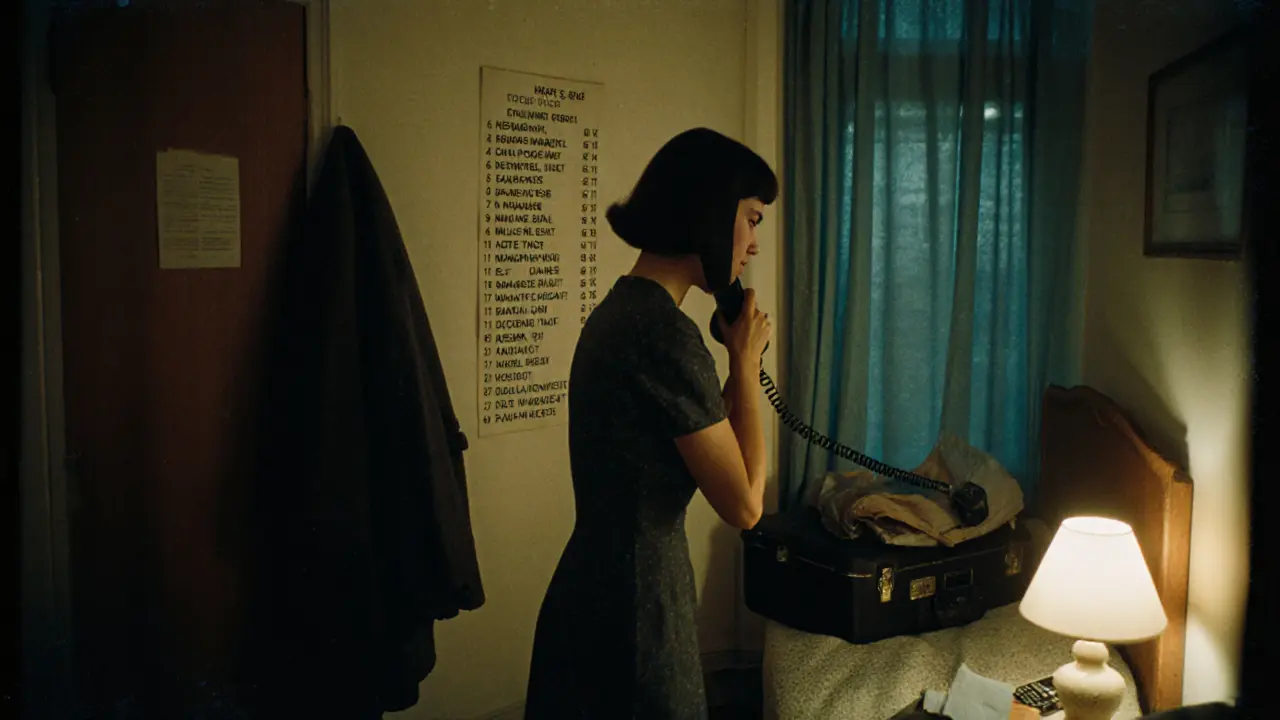London’s escort industry didn’t start with apps or Instagram DMs. It began in alleyways, back rooms of taverns, and the quiet drawing rooms of wealthy men who wanted companionship without scandal. The idea of an escort-someone paid for company, conversation, and intimacy-has existed for centuries, but how it operates, who it serves, and how it’s seen has changed more than the skyline of the city itself.
Victorian London: The Art of Discretion
In the 1800s, London was the largest city in the world, and its streets teemed with poverty, ambition, and hidden desires. Women who offered companionship for money weren’t called ‘escorts’-they were ‘fallen women,’ ‘ladies of the night,’ or quietly referred to as ‘companions.’ Many were widows, abandoned wives, or daughters of working-class families with no safety net. The law didn’t ban prostitution outright, but it criminalized soliciting in public. That pushed the trade underground.
High-end clients hired women through networks of madams who ran discreet boarding houses in Mayfair and Belgravia. These weren’t streetwalkers. They dressed well, spoke French, played the piano, and knew how to hold a conversation about politics or poetry. One famous example was Marie Duval, who hosted gatherings for politicians and artists in her Kensington home. Her clients paid £5 a night-roughly £600 today-and valued her intellect as much as her company.
The Victorian era didn’t invent the escort, but it perfected the illusion of respectability. A woman could be a ‘lady’s companion’ on paper, while the truth was far more complex. The line between paid companionship and sex was blurred, but rarely discussed. The stigma was heavy, but the demand never faded.
Early 20th Century: War, Change, and the Rise of the Call Girl
After World War I, London changed. Women had worked in factories, earned wages, and gained a taste of independence. The 1920s brought jazz, flappers, and a new kind of social freedom. The escort trade adapted. Women began advertising in newspapers under coded language: ‘young lady seeks pleasant evening,’ or ‘accommodation for gentleman seeking cultured company.’
By the 1950s, the term ‘call girl’ became common. These women didn’t wait on street corners. They were booked by phone, often through a receptionist or a discreet agency. Some worked alone. Others were part of small networks run by former escorts who understood the risks and knew how to protect their staff. One such agency, operating out of a flat in Chelsea in the 1960s, reportedly had 12 women on its books, charging £10-£20 per hour-equivalent to £150-£300 today.
Police raids were frequent, but rarely targeted the clients. The women bore the brunt of the law. Arrests for ‘loitering with intent’ were common. But the industry kept growing. London’s nightlife expanded. Hotels, clubs, and private parties created new demand. The escort became less of a secret and more of a service-still illegal in many ways, but increasingly normalized among the wealthy and powerful.

The 1980s to 2000s: Legal Gray Zones and the Internet Shift
Britain’s laws around prostitution remained tangled. It wasn’t illegal to sell sex. It wasn’t illegal to buy it. But it was illegal to run a brothel, to solicit in public, or to live off the earnings of someone else’s sex work. This created a legal gray zone that the escort industry exploited.
By the late 1990s, the internet began to reshape everything. Websites like ‘London Escorts’ and ‘London Date’ emerged. Profiles included photos, rates, availability, and even personal bios. Women could now market themselves directly. No more madams. No more middlemen. No more paying 50% of earnings to an agency. Suddenly, an escort in Richmond could reach a client in Kensington without ever leaving her flat.
Agencies didn’t disappear-they evolved. Many became ‘dating concierge’ services, offering ‘companionship for social events,’ ‘dinner dates,’ or ‘event attendance.’ The language changed to avoid legal trouble. ‘Escort’ became ‘companion.’ ‘Sex’ became ‘intimacy.’ ‘Booking’ became ‘arranging a meeting.’
By 2010, over 80% of London escorts were advertising online. A 2013 Home Office report estimated that 10,000-15,000 people in London were working in some form of paid companionship. Many were students, single mothers, or women looking for flexible income. A few were in the industry by choice. Most were just trying to get by.
2020s: Apps, Safety, and the New Normal
Today, the London escort industry is digital, fragmented, and more regulated than ever-though not by law, by platform rules.
Apps like OnlyFans, Patreon, and private messaging platforms have replaced the old escort websites. Many women now operate under the guise of ‘content creators,’ offering virtual dates, personalized videos, or subscription-based companionship. Physical meetings still happen, but they’re arranged through encrypted messaging, often with strict safety protocols: verified IDs, meet-up locations chosen by the escort, and a friend who knows where they are.
There’s also a growing movement for decriminalization. Groups like the English Collective of Prostitutes argue that criminalizing clients or third parties doesn’t protect workers-it just makes them more vulnerable. In 2024, a pilot program in Westminster tested a harm-reduction model: escorts could register voluntarily with local councils to access health services, legal advice, and safe housing. Over 300 women signed up in six months.
What’s different now? The clients. They’re not just rich men in suits. They’re single professionals, divorced fathers, expats, and men who feel lonely in a hyper-connected world. The demand isn’t for sex-it’s for connection. A listening ear. A friendly face. Someone who doesn’t judge.
And the escorts? Many are educated. Some have degrees in psychology, journalism, or social work. A 2023 survey by the London Sex Workers’ Collective found that 62% of respondents had at least a bachelor’s degree. Nearly 40% were studying while working. The industry isn’t a last resort anymore-it’s a choice, for some, and a necessity, for others.

Why This History Matters
The escort industry in London isn’t just about sex. It’s about survival. About dignity. About how society treats women who step outside traditional roles. For centuries, it’s been hidden, shamed, and policed. But it’s never gone away.
Today’s escorts don’t need to hide in alleys. They can build brands. They can set boundaries. They can choose their clients. They can walk away. The tools have changed. The risks haven’t. But the power? That’s slowly shifting.
If you want to understand modern London, you can’t just look at its museums or its tube stations. You have to see the quiet, complex lives of the people who keep its social engine running-sometimes in the shadows, sometimes in plain sight.
What’s Next?
The next decade will likely bring more legal clarity-or more chaos. Countries like New Zealand and parts of Australia have fully decriminalized sex work. Their outcomes? Fewer arrests, better health access, and lower rates of violence against workers.
London hasn’t gone that far. But the conversation is changing. More people are asking: Why are we punishing the people who need help the most?
The escort industry in London has survived war, repression, and moral panics. It’s adapted to every technological shift. It’s survived because it answers a human need-one that won’t disappear just because it’s uncomfortable to talk about.
What happens next depends on who’s listening.
Is it legal to be an escort in London today?
Yes, selling sexual services is legal in London. However, related activities like running a brothel, soliciting in public, or living off someone else’s earnings from sex work are illegal. This creates a legal gray area where escorts often operate alone and avoid public advertising to stay within the law.
How have escort services changed since the 1990s?
In the 1990s, escorts relied on printed flyers, phone lines, and agencies. Today, most use encrypted apps, private social media, and subscription platforms like OnlyFans. The shift has given workers more control over pricing, safety, and client selection, while reducing reliance on third parties like madams or agencies.
Are most escorts in London women?
The majority are women, but the industry includes men and non-binary individuals as well. A 2024 study by the London School of Economics found that 12% of independent escorts in the city identified as male or non-binary, with demand growing for gender-diverse companionship services.
Do escorts in London have access to healthcare?
There’s no official system, but several charities offer free STI testing, mental health support, and legal advice. Programs like the English Collective of Prostitutes and the London Sex Workers’ Collective run drop-in centers in areas like Soho and Peckham. Some escorts also access NHS services privately, though stigma can make this difficult.
Why do people become escorts in London?
Reasons vary. Some need flexible income to support education or family. Others enjoy the autonomy and control over their schedule. A 2023 survey found that 58% of respondents chose the work because it paid better than other part-time jobs available to them. Only 14% said they entered due to financial desperation.
Are there any risks involved in being an escort today?
Yes. Despite digital safety tools, risks include harassment, non-payment, stalking, and violence. Because the work is legally ambiguous, many avoid reporting crimes to police for fear of being arrested themselves. Safety practices-like screening clients, sharing location with a friend, and meeting in public places first-are now standard among experienced workers.
